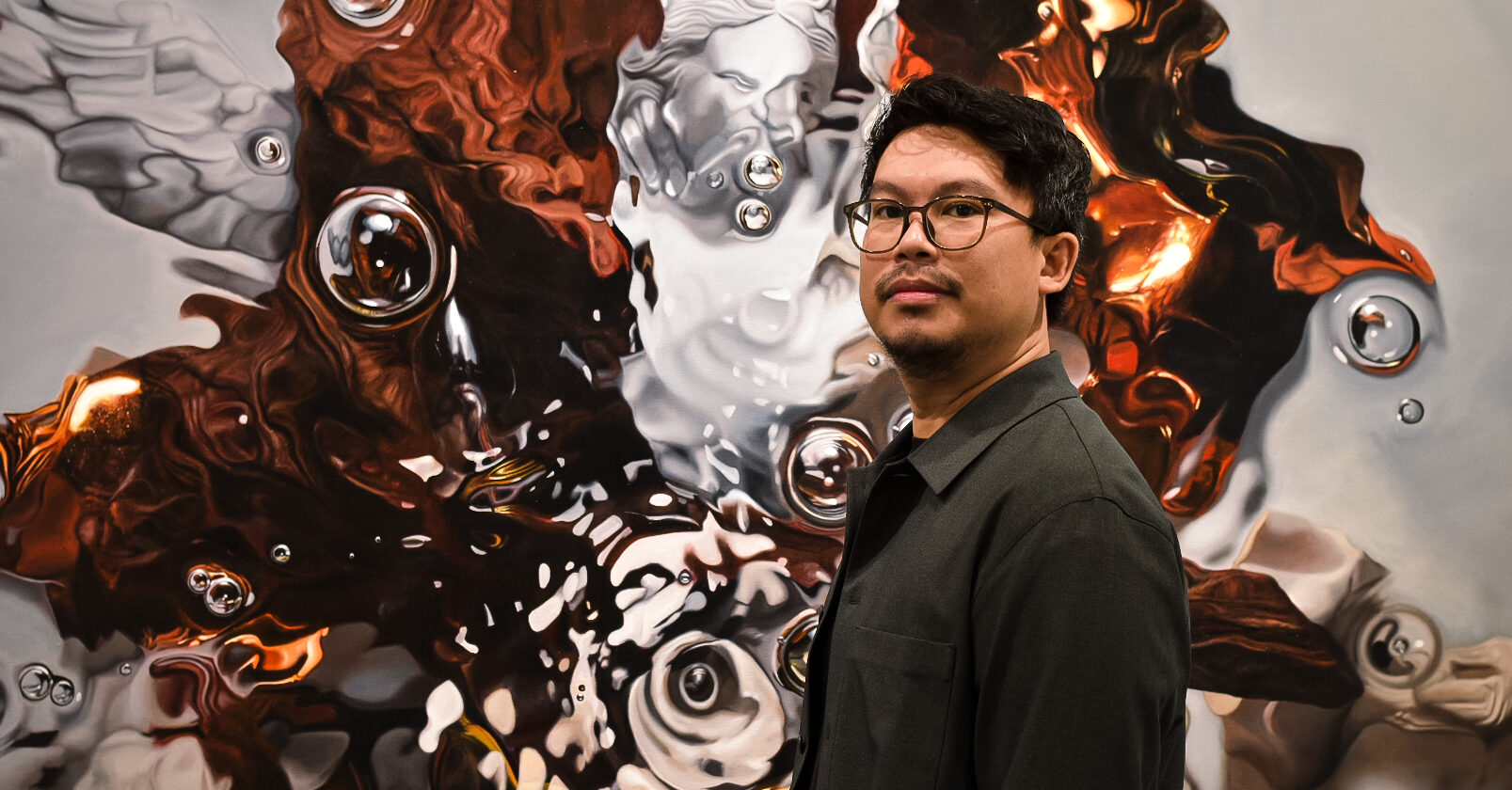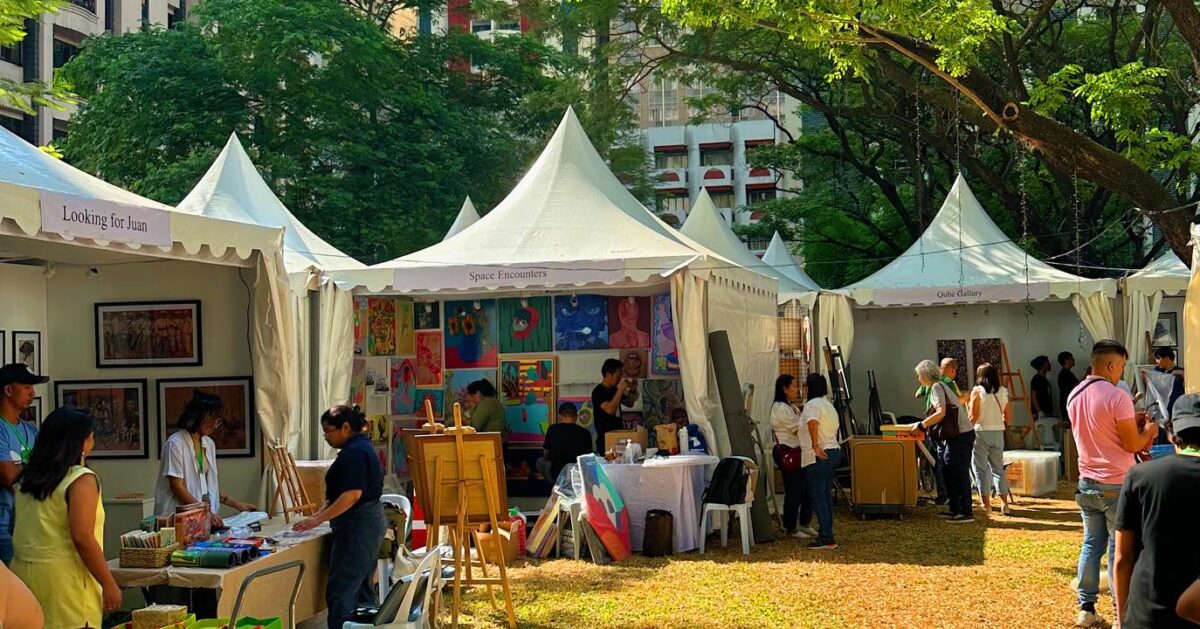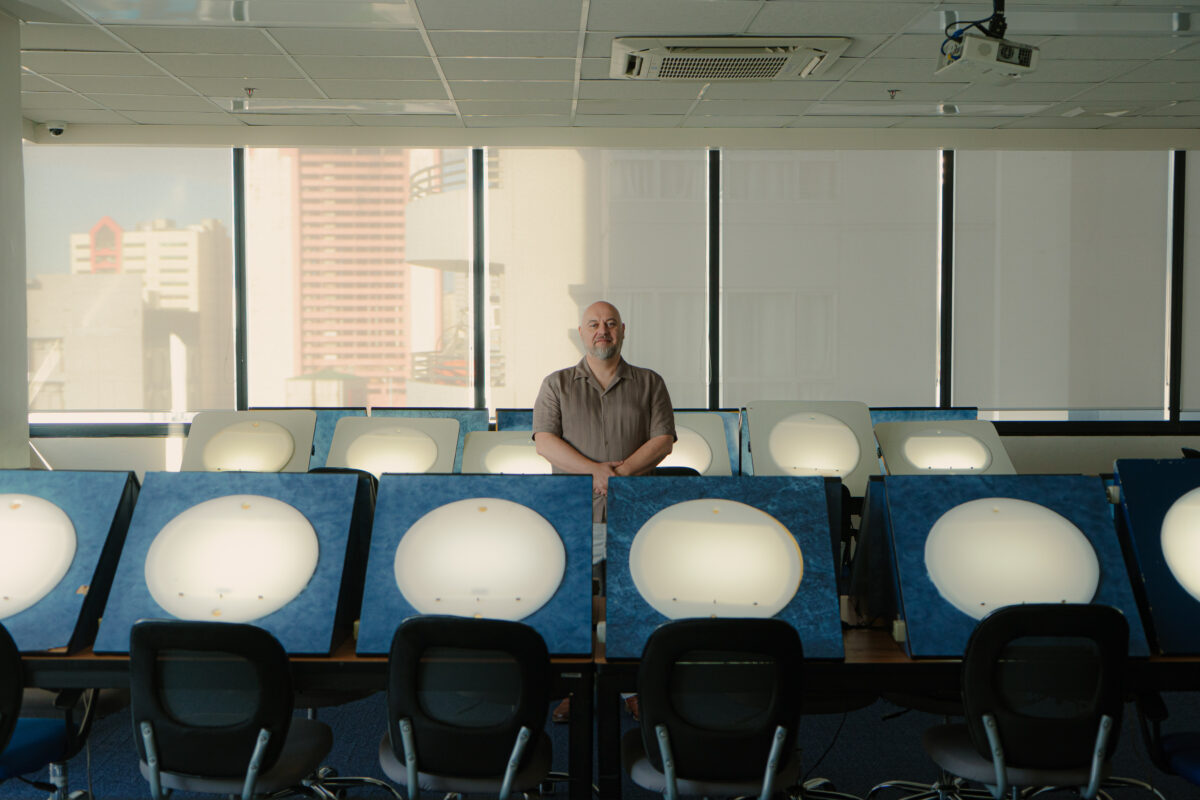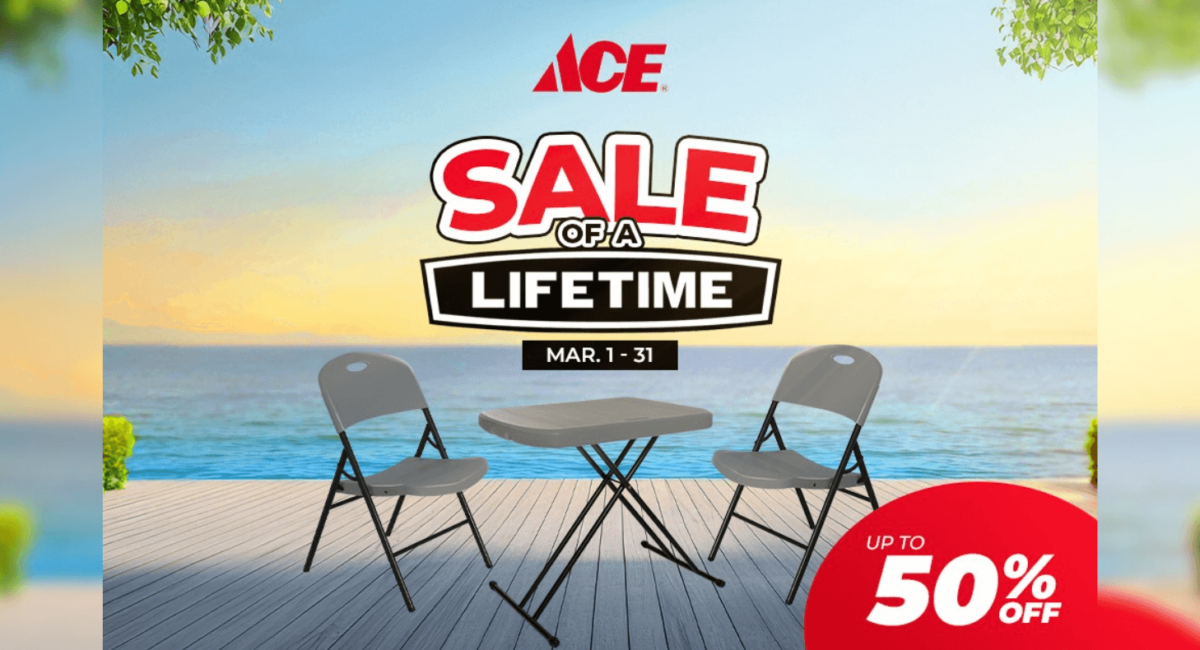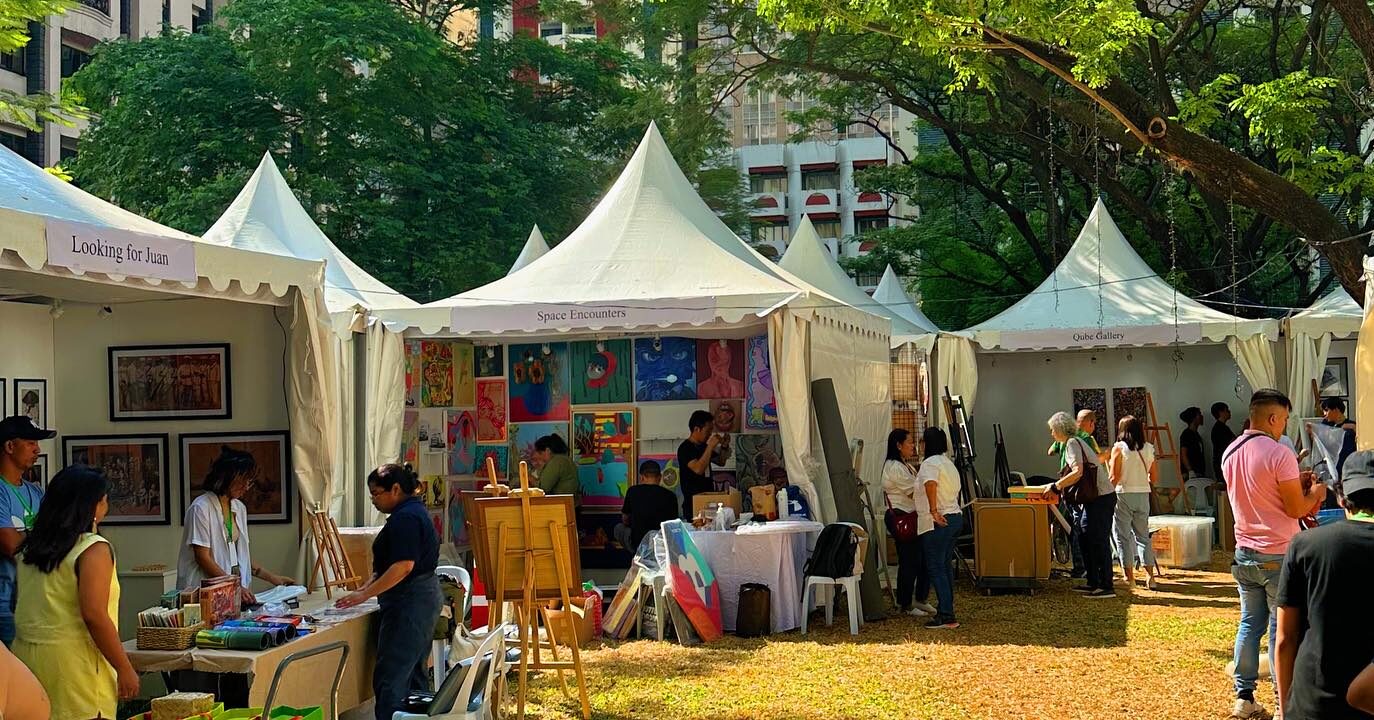Presented by Ysobel Gallery, Sid Natividad’s “Of Ebbs and Echoes” was the only Filipino solo exhibition at Art Taipei 2024
Reflecting on his solo exhibition “Of Ebbs and Echoes” at Art Taipei 2024, Filipino artist Sid Natividad shares his conceptual points: “The Philippines and Taiwan are both completely surrounded by water. This shared geographical feature was a core point of reflection as I was working on my paintings for my solo exhibition at Art Taipei 2024.”
“For me, the sea is both a barrier and a bridge,” he continues. “As Austronesians, anthropologists have traced the origins of most of the Filipino people to the Indigenous peoples of Taiwan. Today, the Philippines and Taiwan share similarities in climate, geography, culture, and even geopolitical challenges.”
The Manila-based and Quezon province-raised artist is known for his visual language marked by photorealistic depictions of the sea, tackling the paradoxical nature of the water.
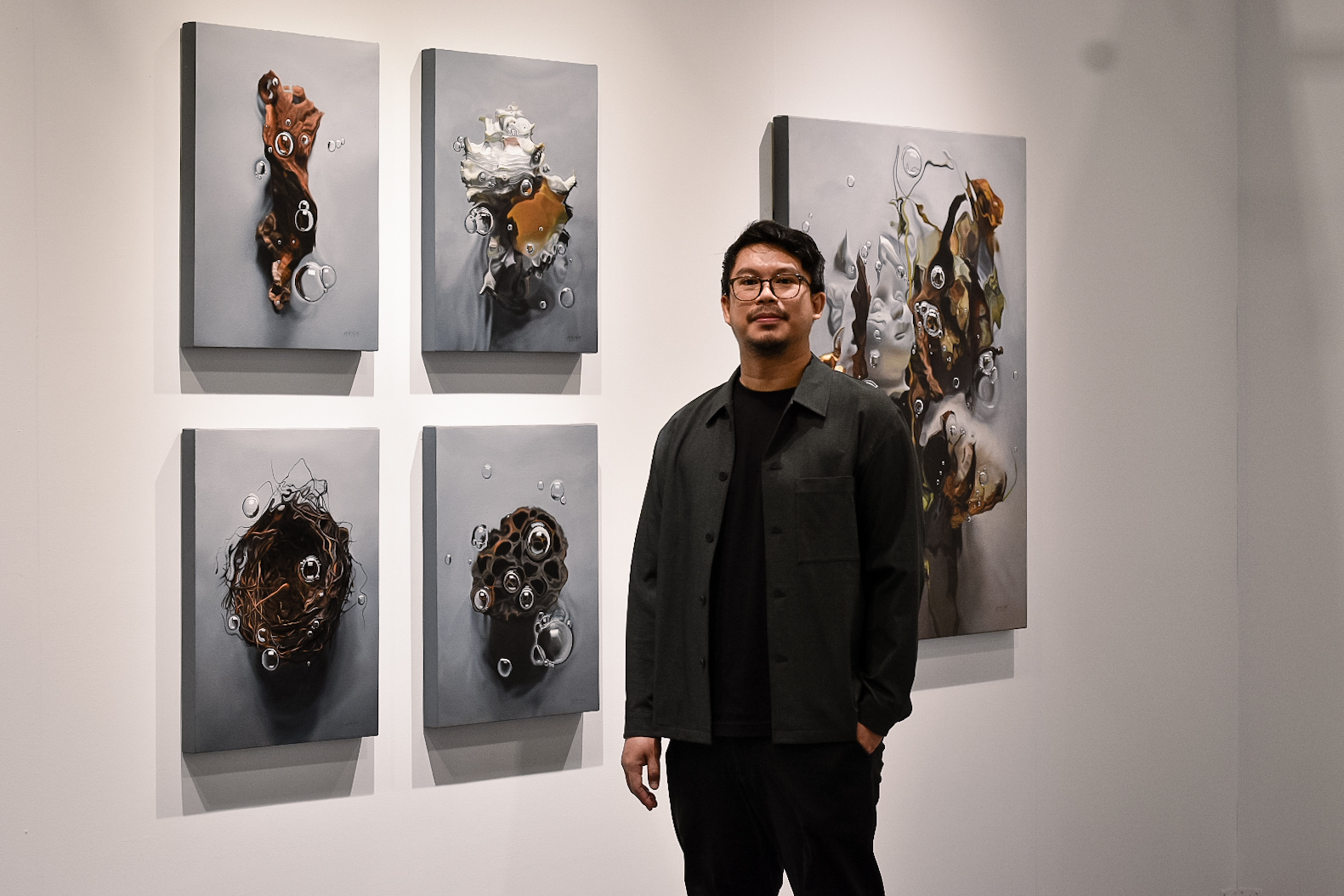
Born in 1989, Natividad considers himself a contemporary visual artist whose creative process and visual language are both inextricably linked to his rural experience in Quezon. In his own words, Natividad considers himself as someone who “senses, responds, and communes with nature” in deeply visceral and intuitive ways.
“My relationship with nature is largely defined by my existential need to be near it, to be immersed in it. I find a grounding sense of peace whenever I am surrounded by the natural world. I’d like to think that I’m a listener. I listen to the waves, to the breeze, and even to the sound of silence.”
Over the last seven years, Natividad has developed a body of work that embodies his mastery of oil painting techniques as well as his poetic and enigmatic visual language that presents objects submerged in water as subjects that straddle the line between figuration and abstraction. For Natividad, water functions as a “veil” that conceals, reveals, amplifies, distorts, mystifies, and obscures his subjects, usually found objects that bear observable material degradation.
“Alla prima or wet-on-wet is the technique I use in capturing the richness, complexity, and nuance of water as a subject matter. As a visual storyteller, I use the archetypal symbolism of water to connect to the broader human experience,” says Natividad.
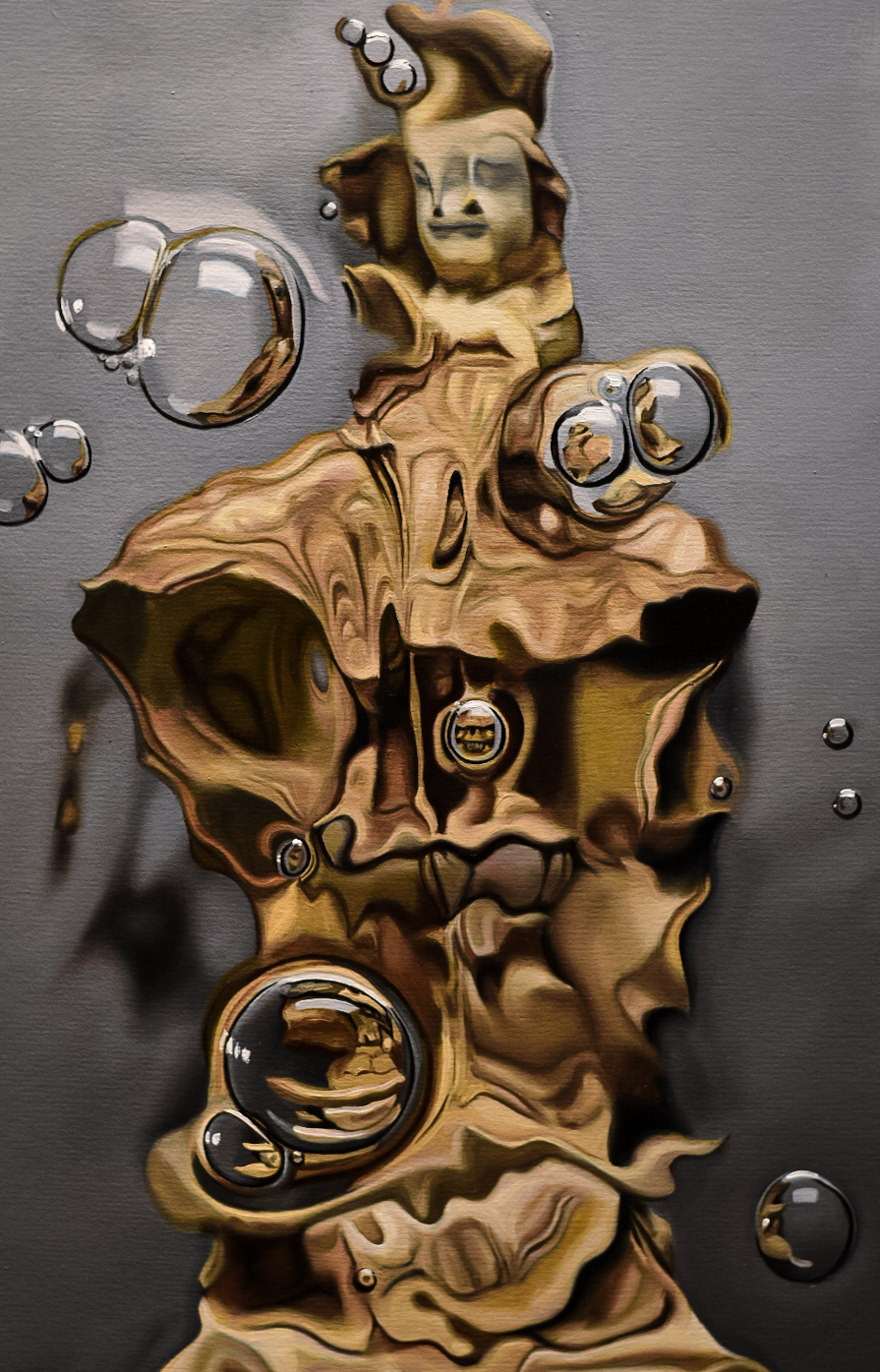
At Art Taipei 2024 held at the Taipei World Trade Center from Oct. 25 to 28, Ysobel Gallery presented Natividad’s first international solo exhibition and the only solo exhibition by a Filipino artist where he captured the contradiction between the sea’s boundless serenity and unimaginable terror as well as its capacity to both sustain life and bring forth death.
“The plan to mount Sid’s solo exhibition at the Art Taipei 2024 was a year in the making. Our goal has always been to represent the very best of Philippine contemporary art regionally and globally. For a gallery that isn’t as established as some of Manila’s globally recognized galleries, we accepted the financial and logistical challenges that come with mounting an ambitious solo exhibition abroad. The experience required us to punch above our weight class. Our belief in Sid’s talent, vision, and creative process is enough for us to have some skin in the game,” says Patrice and Mark Tiongco, co-owners and co-founders of Ysobel Gallery.

In this sit-down interview in Taipei, Natividad shares the impetus behind his captivating visual language, his on-going love affair with nature and rural life, and what it means to be the only Filipino to present a solo exhibition at Art Taipei 2024.
READ: 12 standout works at Art Taipei 2024
In your own words, who is Sid Natividad?
Sid Natividad is an introvert and an observer. In terms of my essence, I have always been a probinsyano. I am a creature of Quezon, the coastal province I grew up in. As a child, I knew I couldn’t express myself with utmost clarity through speaking. I always saw myself as a nonverbal person. As a child, I had a way of framing in my head the objects in our home. Objects weren’t just objects but were trinkets to be disassembled and reconstructed. As a child, I remember having clear visions on how to break down an object and put it back together or even create a new incarnation of it.
How important is your rural experience in the development of your visual language as a painter?
My works emerge from an unending sense of longing. I feel displaced whenever I am in an urban space. Reconnecting with my hometown grounds me and enables me to produce works that reveal my personal worldview and the way I interact with the environment. If I am unable to reconnect with my rural roots, I wouldn’t be able to operate properly as a human being and visual artist.
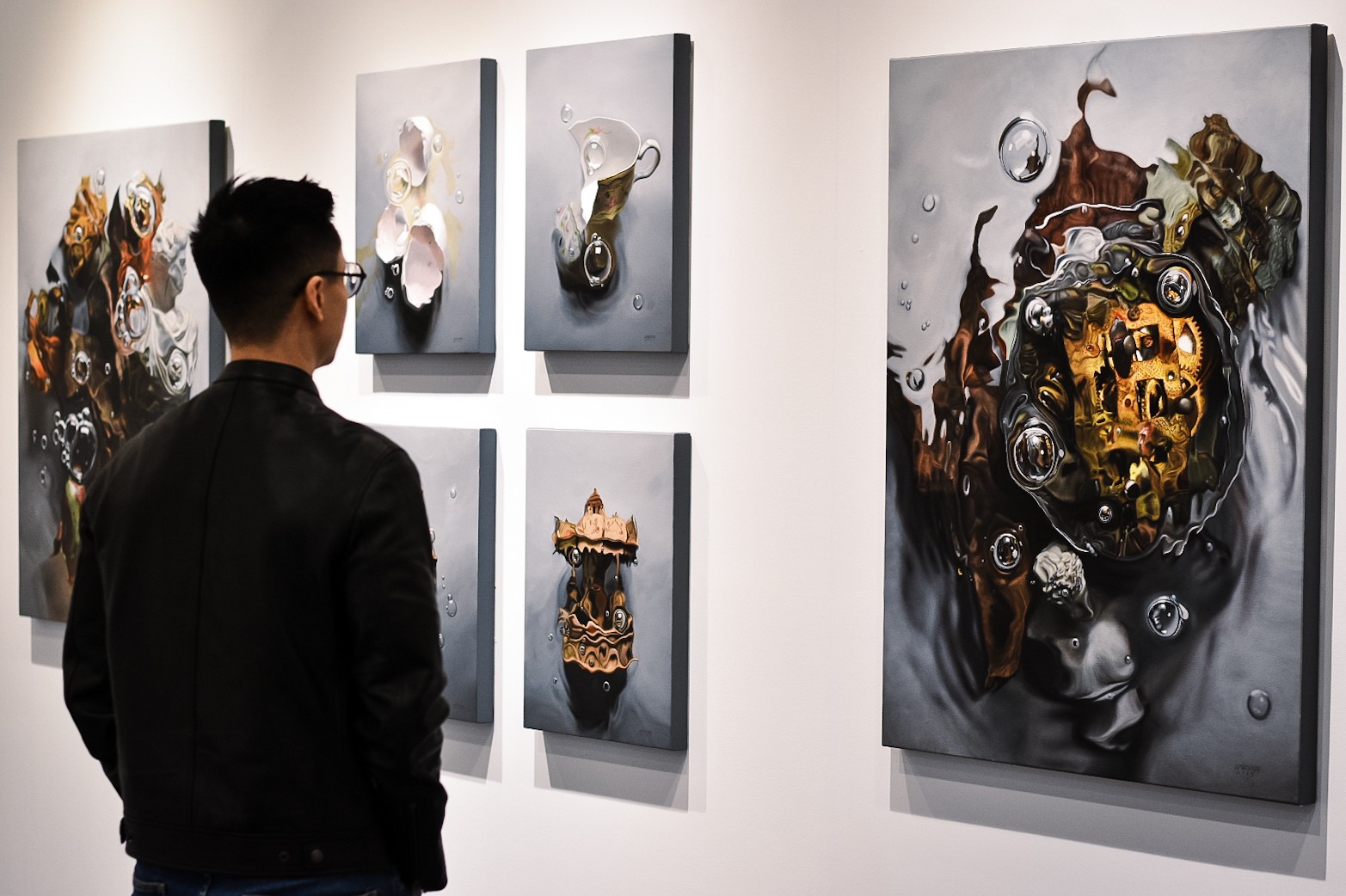
Can you walk us through your creative process for this project?
I am a very intuitive person. I feel deeply. I sense profoundly. I am also a rational and intellectually methodical person, but the way I engage with my inner world and the world around me has always been driven by what I feel. Whenever I see an object that has undergone significant degradation, I am reminded of that object’s material history and original context. I immediately imagine how the process of submerging worn-out objects that are embedded with memory can create new meanings. I fundamentally use water to distort how these objects are perceived in a new light.
Why is the process of visually distorting objects important to your creative process? What is it about distortion that continues to compel you to visually transform images and forms?
The process of distortion enables me to draw parallels between painting and history. By manipulating water to fundamentally transform the appearance of static objects, I am able to turn a representational image into an almost nonfigurative, abstracted version of it. I connect this transposition with the material degradation of objects over time. I am interested in how time changes everything—how time brings forth death and destruction and how time allows for new life to emerge.
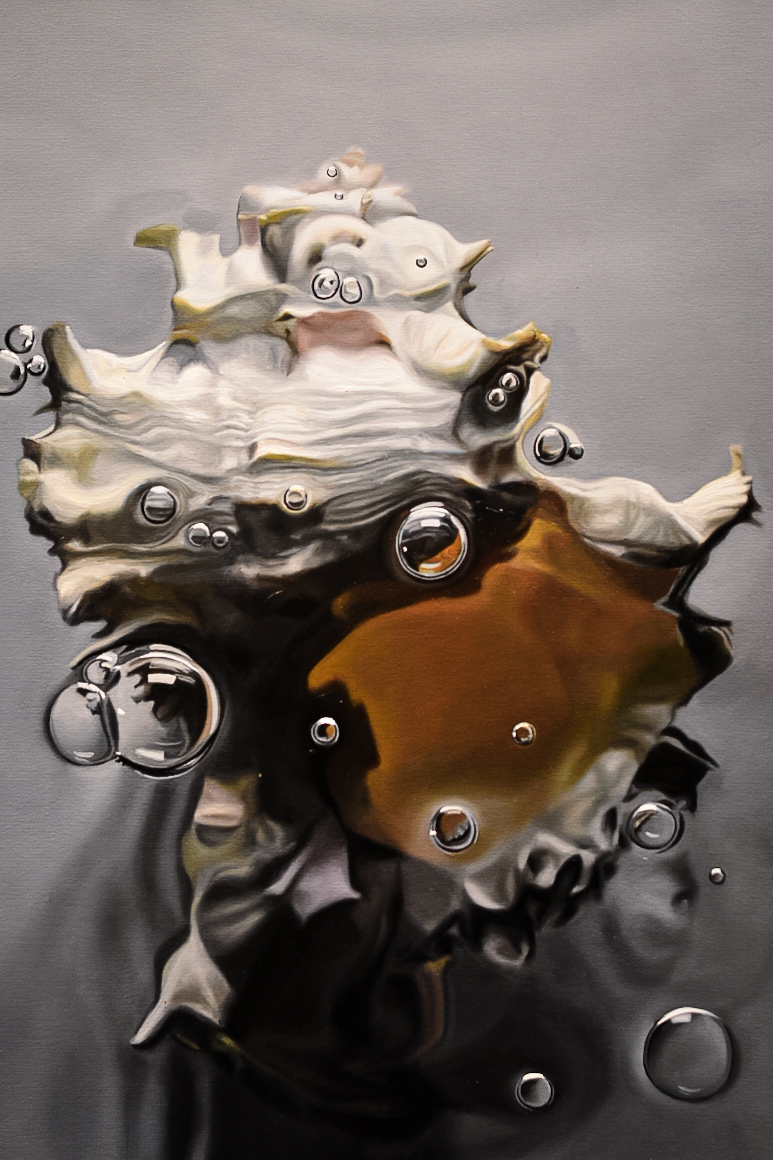
READ: Tina Maristela Ocampo’s eclectic tablescapes are proof of her intuitive sense for beauty
What is it about water that has kept it the center of your body of work?
The sea fundamentally connects me back to my rural roots. The sea also serves as a setting wherein I explore the paradoxical nature of water. Water is archetypal, universal, transcendental. Additionally, I really couldn’t thrive within urban spaces. My aesthetic sensibility, my essence, my ways of being and seeing are linked with my provincial experience. Painting water takes me back to the place where I am most myself.
What is the core concept behind your solo show “Of Ebbs and Echoes”?
In my solo exhibition “Of Ebbs and Echoes,” I have deeply explored the paradoxical nature of water both as element and symbol. The sea is both serene and turbulent and it serves both as a barrier and bridge. Preparing for Art Taipei 2024, I hoped to draw parallels between the shared experiences of the people in the Philippines and Taiwan. I am interested in creating paintings that allow for broader, more universal human experiences to be expressed and felt.
What are the challenges and setbacks that you and Ysobel Gallery experienced while mounting your first international solo exhibition?
Aside from the obvious challenges of transporting artworks to a foreign land, I feel that the deeper challenge was that of growth. Ysobel Gallery and I were challenged to elevate the way we operate within a regional context. Committing to present a solo show in an international fair such as Art Taipei 2024 meant that we had to have some skin in the game.
To have been able to successfully put together our first participation in a major international fair showed me that Ysobel and I, in the words of Ysobel co-founder Ma’am Patrice Tiongco, can actually “punch above our weight class”—that we can, in fact, take up space and amplify, through art, the unique ways Filipino contemporary artists view and engage with the world.
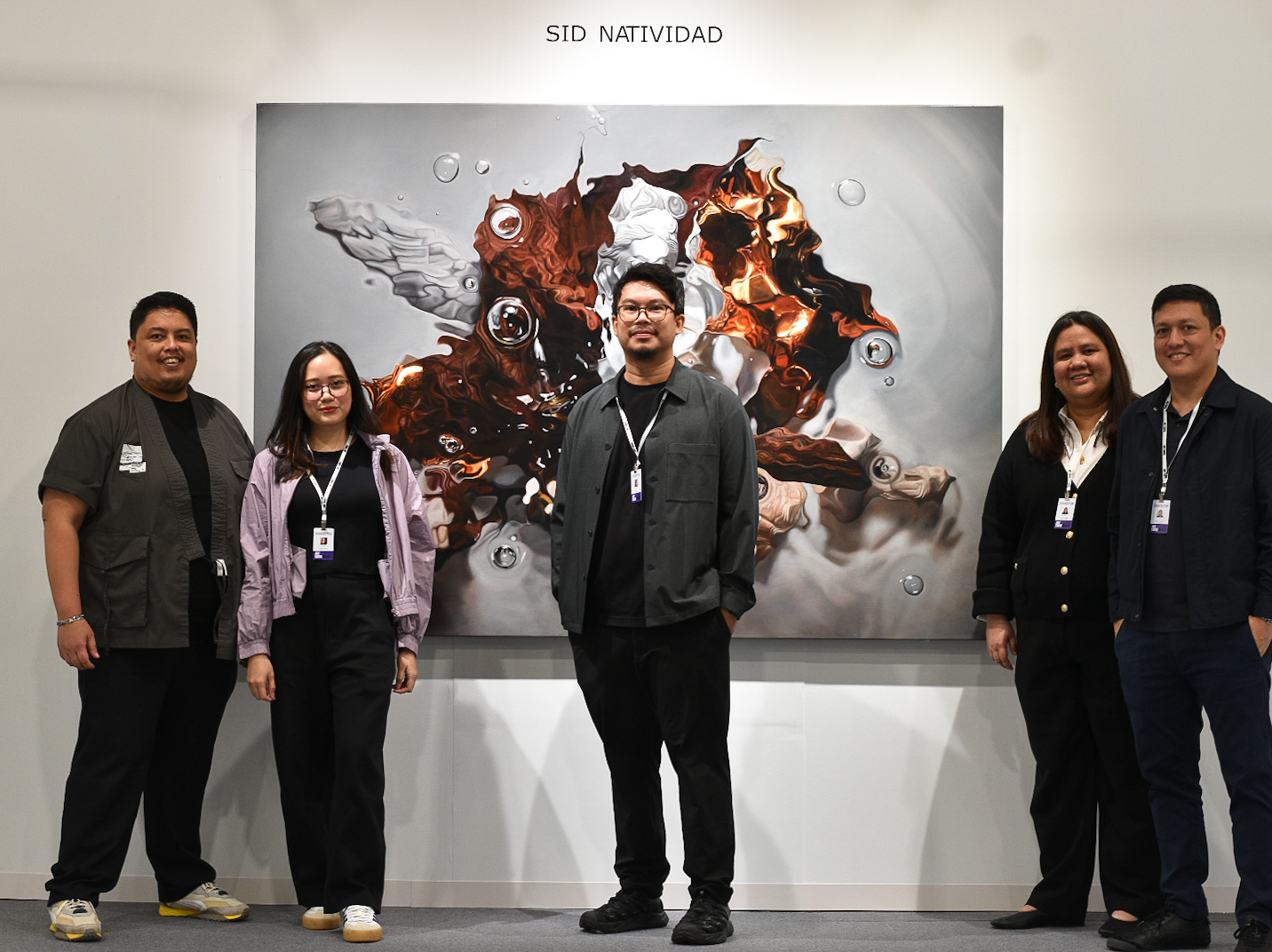
If you can leave us a quotable quote about the essence of your studio practice, what would it be?
What is perhaps the most important skill to acquire is to be able to continuously listen. We need to listen to our cells, our body. We need to listen to nature, the world around us. We need to listen to our gut, our intuition.
Why are you an artist?
Because it is the only language that I know. Without it, I am voiceless.

